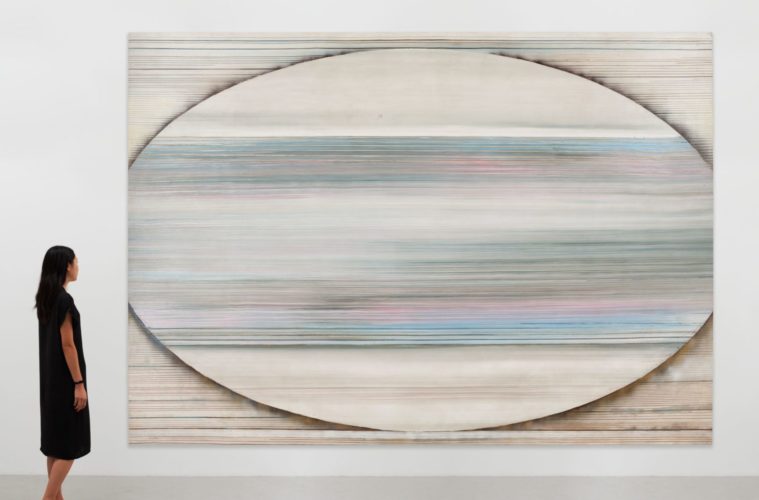Too gestural and evocatively prismatic for Minimalism, too refined and elusive for Abstract Expressionism, too textured and materially layered for Hard Edge, and being Action Painting only if the “action” is transcendental meditation, nevertheless, it’s high time for the inventive work of American painter Ed Clark (1926-2019) to take its rightful place in contemporary art history.
Remembered as a highlight of the Broad’s 2019 exhibition Soul of a Nation: Art in the Age of Black Power 1963-83, the new exhibition Ed Clark: Expanding the Image at Hauser & Wirth Los Angeles goes a long way in clarifying his influential legacy.
Setting the tone with chromatically stormy and combustibly contoured works of the late 1960’s, the exhibition soon focuses on Clark’s breakthrough(s) of circa 1970 that saw both the mastering of the ovoid compositional (and sometimes physical) shaping motif, as well as the fullest expression of his proprietary push-broom painting technique that allowed for immediate facture at an industrial scale.
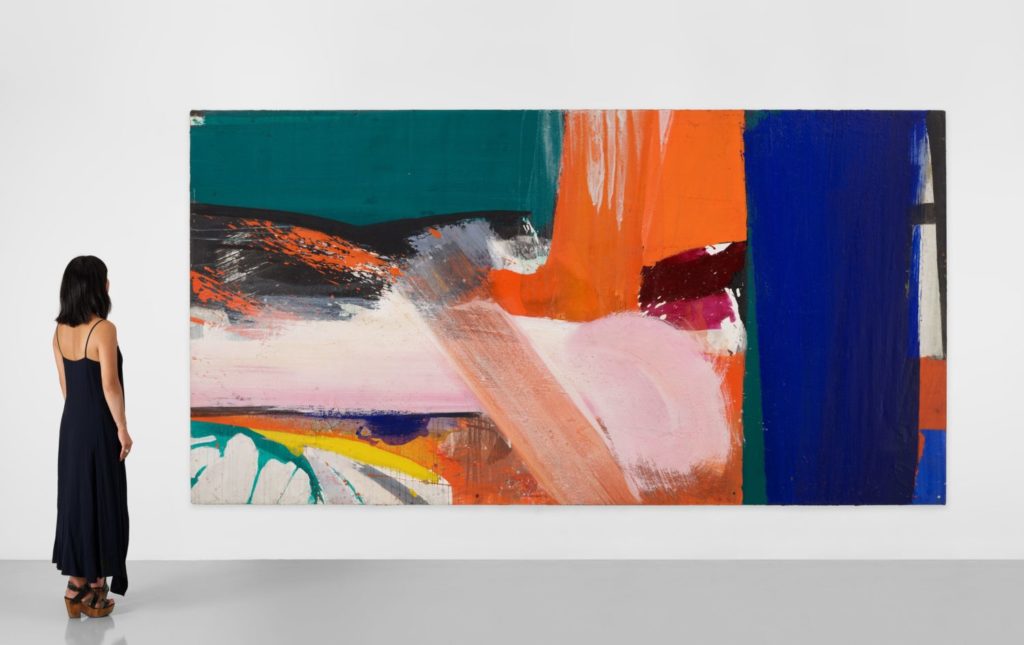
Ed Clark, Locomotion, 1963. Oil on canvas, 75 7/8 x 145 1/2 in. © The Estate of Ed Clark; Courtesy the Estate and Hauser & Wirth
Works like “Locomotion” from 1963 disrupt the picture plane and interfere with optical restfulness in transecting, hefty layering of competing, mottled color fields. By the time of 1970’s “Silver Stripes” Clark’s appetite for toothy color was subsumed beneath veils of translucent, silvery pigment, like fog refracting sunlight.
This, and other works from the early 1970’s, each deploy traces of those colors in ways that both describe and evade a landscape reading. Here the ellipses function like picture windows, the striations unfurl like multiple horizon lines, colors create the suggestion of an illusion of expanding space, and the atmospherics are visible at a distance, before evaporating and giving way to the wavering lines of close-up brush (well, broom) strokes, letting a great deal more specificity operate in the abstract equation.
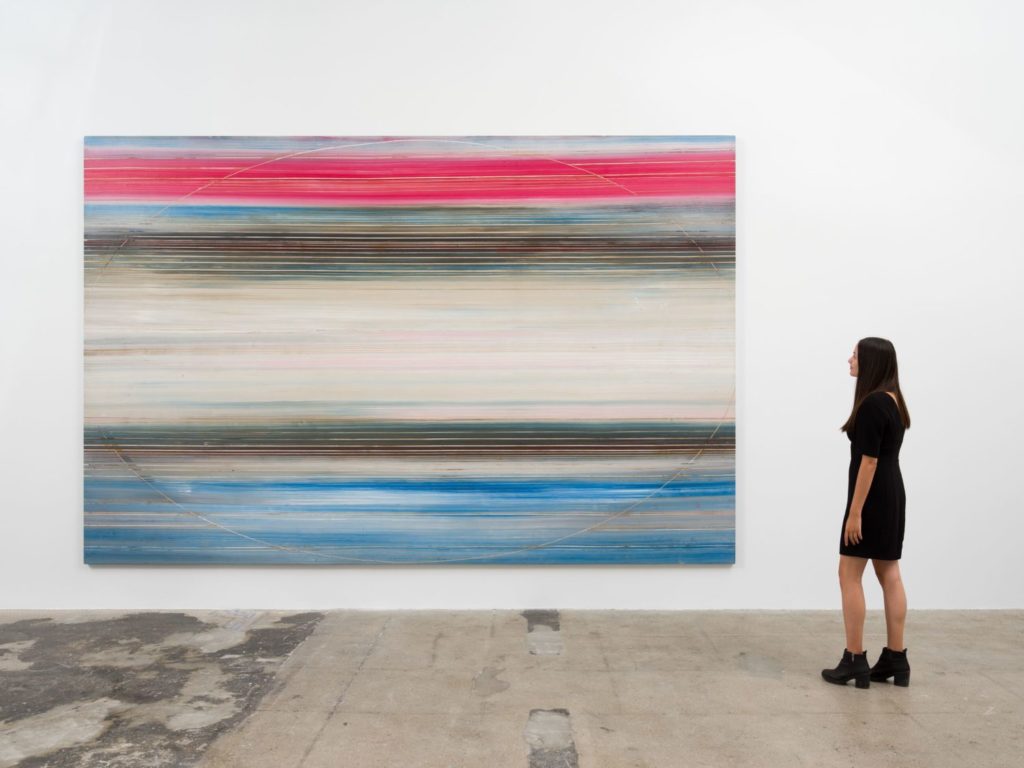
Ed Clark, Integrated Oval #1, 1972, Acrylic on canvas, 114 x 173 5/8 in. Photo by Fredrik Nilsen © The Estate of Ed Clark. Courtesy the Estate and Hauser & Wirth
In fact, it had been in 1968, living at the rural home of the artist Joan Mitchell in Vétheuil, France, when Clark began to create elliptically shaped paintings that mimicked the form of the human eye. Integrated Oval #1 (1972), which was also in the 1973 Whitney Biennial was both the height and the virtual end of that profound phase of his career. In 1971, Clark had visited another artist friend, Jack Whitten, in Crete, where he became, “enraptured by the Mediterranean light and atmosphere. Influenced by this new terrain, his palette began to veer into pastel hues that rendered greater nuance in his art.”
Drawn as well to the international diaspora of Black American bohemians, who like him traveled extensively out of both curiosity and a desire for relief from the rampant racism at home, when in New York Clark’s activities included not only his own studio pursuits, but also the establishment of the Lower East Side artist-run cooperative space, Brata Gallery. Each of these areas, as well as earlier influences from within the expat Paris community he joined in the mid-1950’s like Mitchell and Sam Francis, is honored within his work, while at the same time reinvented in a language all Clark’s own.
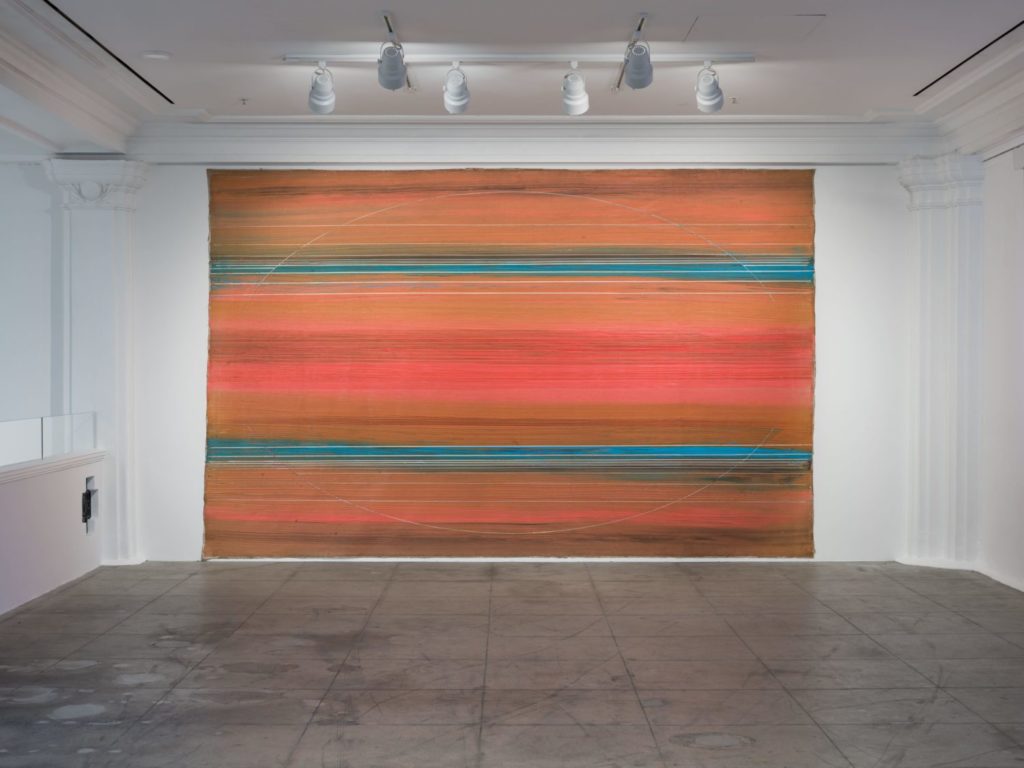
Ed Clark: Expanding the Image at Hauser & Wirth Los Angeles, installation view of Ife Rose, 1974 © The Estate of Ed Clark. Courtesy the Estate and Hauser & Wirth. Photo by Fredrik Nilsen
The masterpiece “Ife Rose” (1974), installed unstretched on the upper level, reads like a Puerto Vallarta picture window, a suspended state of permanent sunset. Layers of blood orange, dusty teal and damask rose don’t quite mirror above and below, vibrating between vertical flatness and the receding edge of the world. Downstairs, its less flirtatious cousin “Untitled” (1975) offers the most explicitly depictive image yet, deploying a partial ellipse with a classic, coy horizon conjuring the “view” with an architectural context that can only be described as a window. Intriguingly, this is one work where the illusion holds up on approach; you really feel that you could fall right through, into the world on the other side.
Hauser & Wirth Los Angeles, 901 E. Third St., downtown; On view through January 10, by appointment, with new visiting dates released every few weeks for online booking; hauserwirth.com.
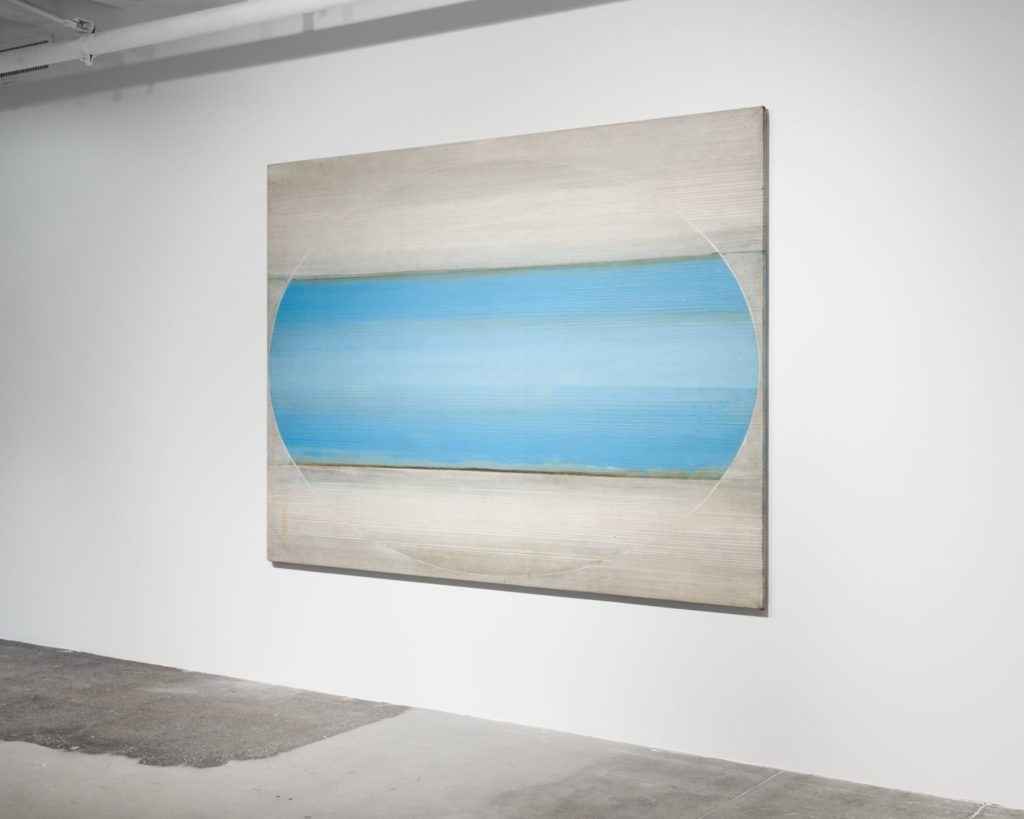
Installation view of Ed Clark. Expanding the Image’, Hauser & Wirth Los Angeles (Untitled, 1975) © The Estate of Ed Clark. Courtesy Hauser & Wirth. Photo by Fredrik Nilsen
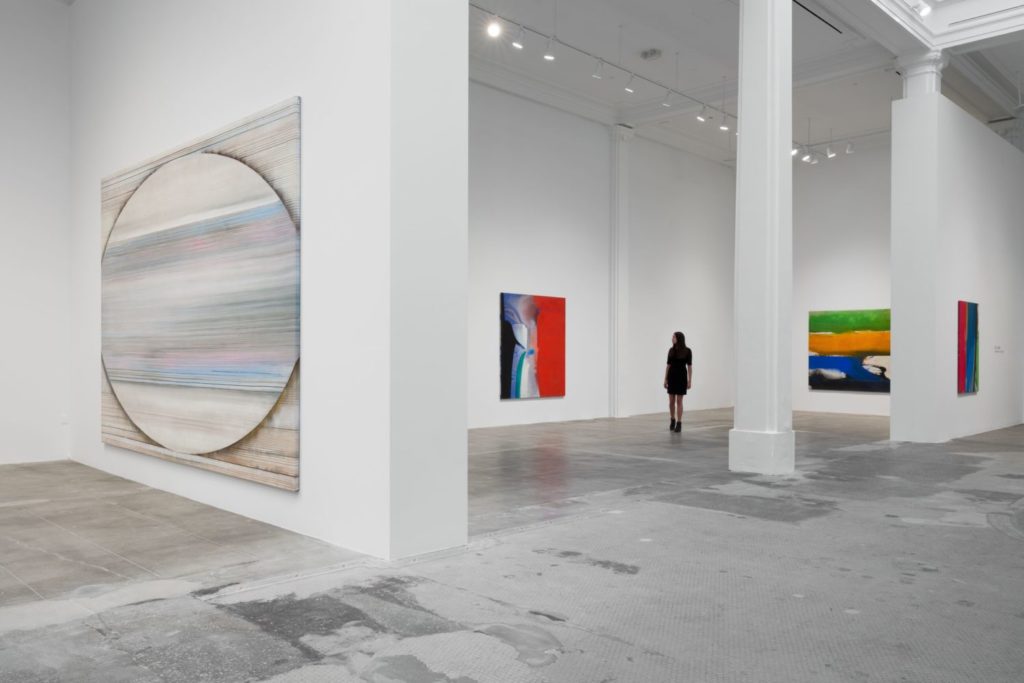
Installation view, ‘Ed Clark. Expanding the Image’, Hauser & Wirth Los Angeles, 2020 © The Estate of Ed Clark. Courtesy the Estate and Hauser & Wirth. Photo by Fredrik Nilsen
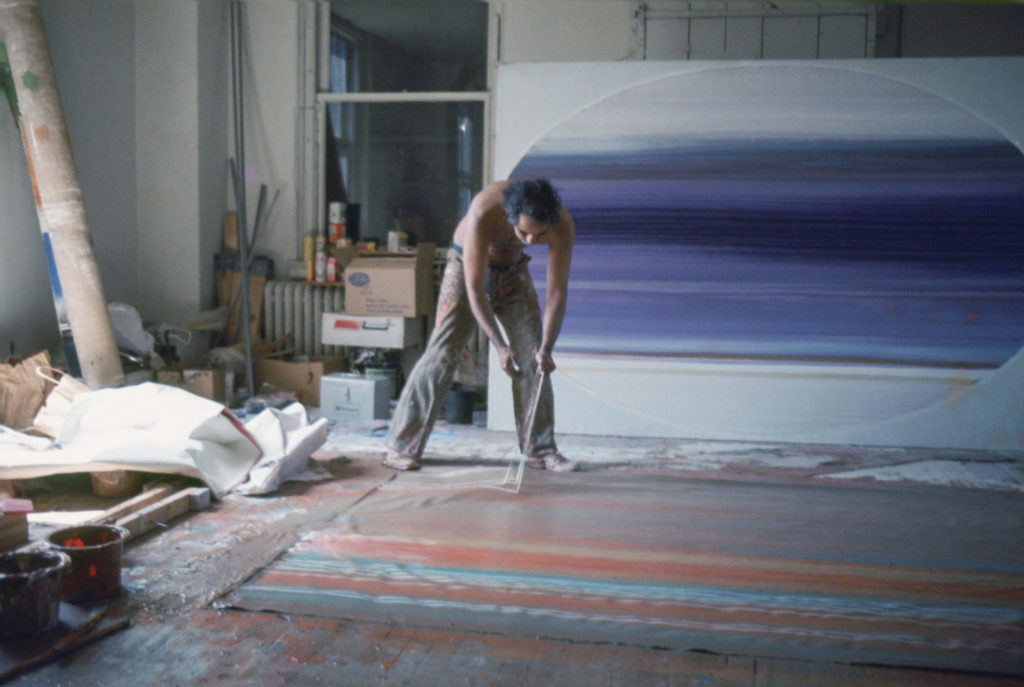
Ed Clark in his studio, 1972 © The Estate of Ed Clark Courtesy the Estate and Hauser & Wirth
Advertising disclosure: We may receive compensation for some of the links in our stories. Thank you for supporting LA Weekly and our advertisers.

